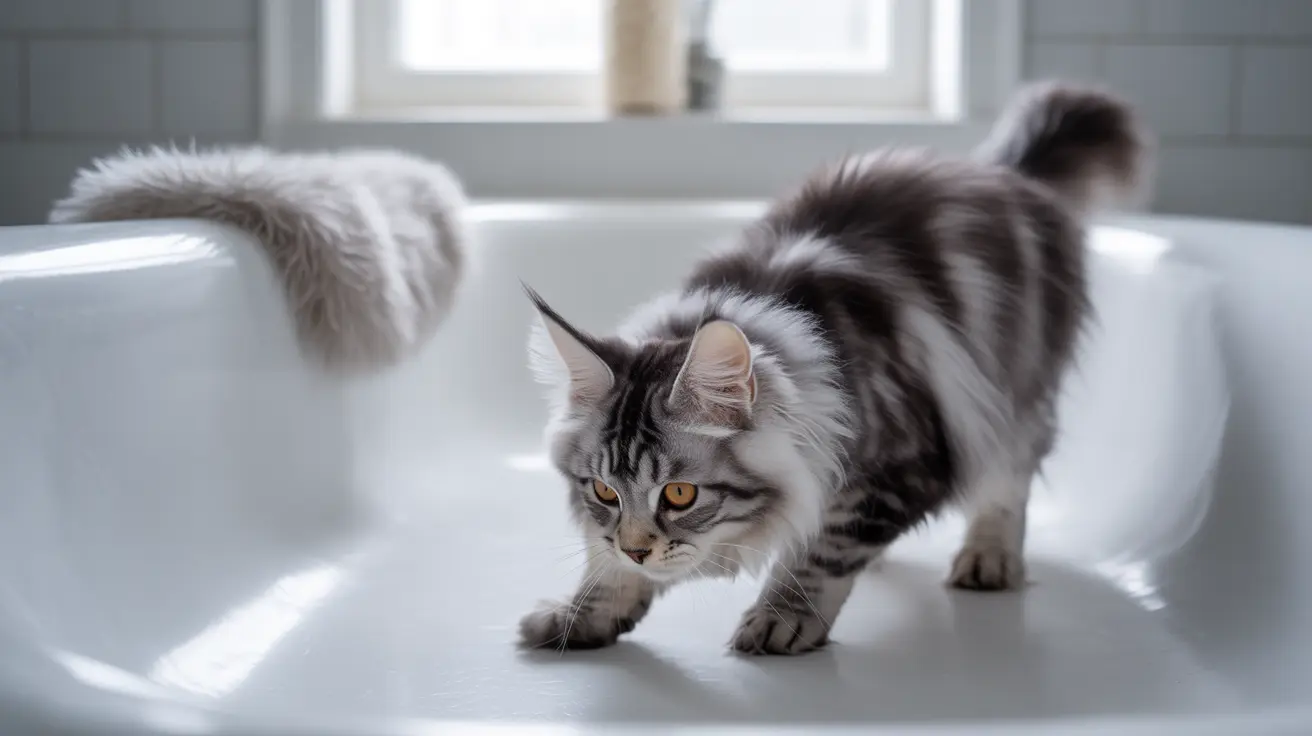Finding cat poop in your bathtub can be both puzzling and frustrating. This unexpected behavior isn't just a random act of defiance – it often signals underlying issues that need attention. Understanding why your cat has chosen the bathtub as their new bathroom spot is the first step toward resolving this concerning behavior.
In this comprehensive guide, we'll explore the various reasons behind this behavior and provide practical solutions to help restore proper litter box habits. Whether it's a medical issue, stress-related behavior, or environmental factors, we'll help you identify and address the root cause.
Common Medical Causes for Bathtub Pooping
Health issues often trigger unusual bathroom behaviors in cats. Several medical conditions can lead to bathtub pooping:
Gastrointestinal Problems
Conditions like inflammatory bowel disease, parasites, or food sensitivities can cause urgent bowel movements, making it difficult for cats to reach their litter box in time. The smooth surface of the tub might feel more comfortable during digestive distress.
Mobility Issues
Arthritis or joint pain can make it challenging for cats to climb into traditional litter boxes. The bathtub's low sides and smooth surface might be easier to access, especially for senior cats or those with physical limitations.
Behavioral and Environmental Triggers
Stress and Anxiety
Cats are sensitive to changes in their environment. New pets, moving homes, or alterations in routine can trigger stress-related bathroom behaviors. The bathroom often provides a quiet, private space that feels safe to stressed cats.
Litter Box Issues
Problems with the litter box setup commonly lead to alternative bathroom choices:
- Dirty or infrequently cleaned boxes
- Undesirable litter type or texture
- Poor box location
- Insufficient number of boxes
- Box size or style concerns
Solutions and Prevention Strategies
Immediate Actions
Take these steps to address the behavior promptly:
- Schedule a veterinary check-up to rule out medical issues
- Clean the bathtub thoroughly with enzymatic cleaner
- Consider placing a temporary litter box in the bathroom
- Monitor your cat's bathroom habits and overall behavior
Long-term Solutions
Implement these changes for lasting results:
- Maintain pristine litter box conditions
- Provide multiple litter box options
- Create a stress-free environment
- Use calming aids like pheromone diffusers if needed
Frequently Asked Questions
Why is my cat suddenly pooping in the bathtub instead of the litter box?
Sudden changes in bathroom habits often indicate either a medical issue or a significant environmental stressor. Schedule a veterinary examination to rule out health problems, and assess recent changes in your household that might be causing stress.
How can I stop my cat from pooping in the tub due to stress or anxiety?
Address stress by maintaining consistent routines, providing hiding spots and vertical spaces, and using feline pheromone products. Consider consulting with a feline behaviorist for severe cases.
Could health problems be causing my cat to poop in the bathtub?
Yes, various health issues including gastrointestinal problems, arthritis, and cognitive dysfunction can cause inappropriate elimination. Always consult with a veterinarian when bathroom habits change.
What litter box changes can prevent my cat from avoiding it and using the tub instead?
Ensure boxes are cleaned daily, use unscented litter, provide multiple boxes in quiet locations, and experiment with different litter types and box styles to find what your cat prefers.
Should I keep the bathroom door closed or put a litter box in the bathroom to stop tub pooping?
Initially, placing a litter box in the bathroom can help redirect the behavior. Once proper litter box habits are restored, you can gradually move the box to a preferred location. Closing the door without addressing the underlying cause may lead to elimination problems elsewhere.
Conclusion
While finding cat poop in your bathtub is concerning, it's a solvable problem with the right approach. Start by ruling out medical issues, then address environmental and behavioral factors. With patience and consistent implementation of the solutions outlined above, you can help your cat return to proper litter box habits.
Remember that punishment never helps and may worsen the situation. Focus on positive reinforcement and creating an environment where your cat feels safe and comfortable using their litter box.






